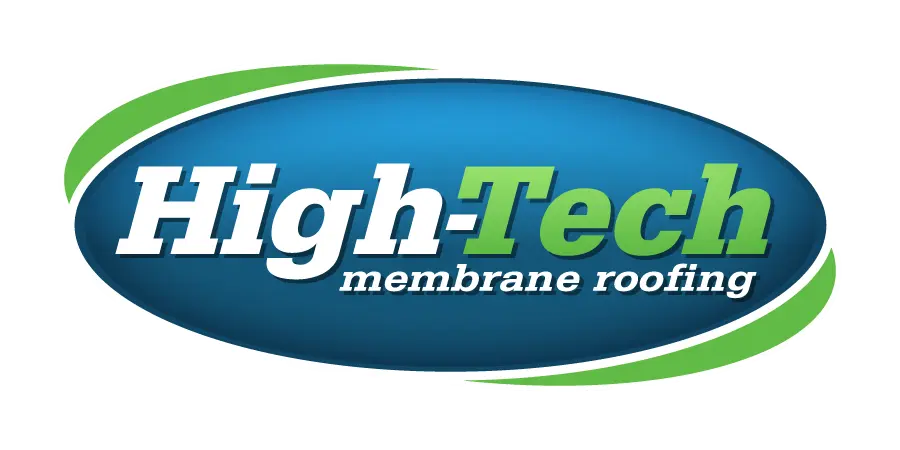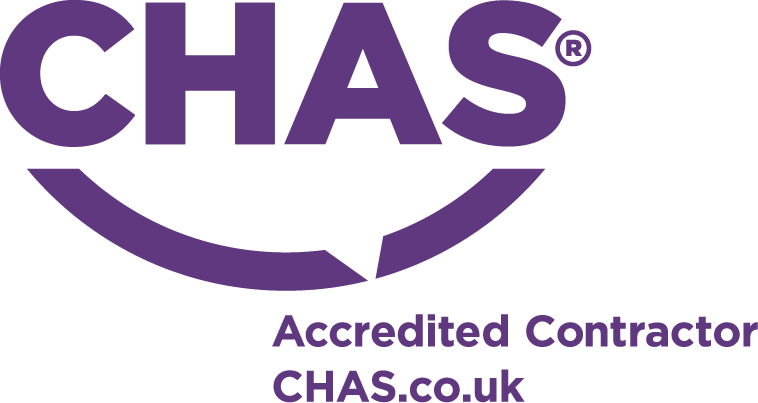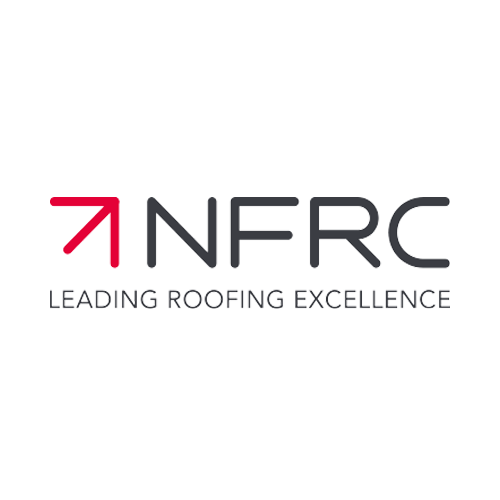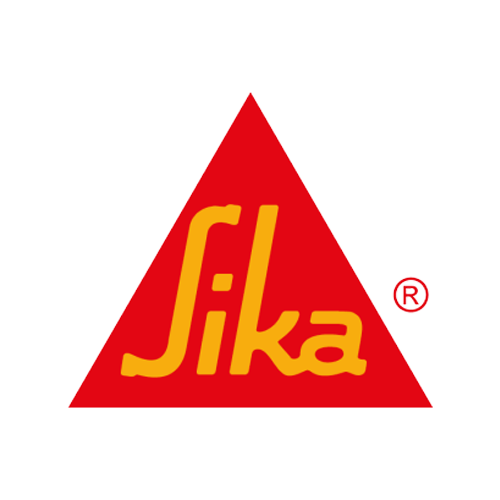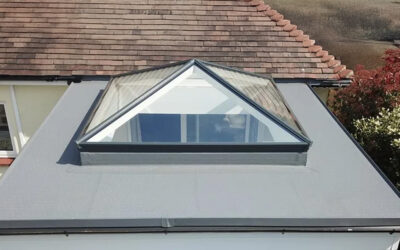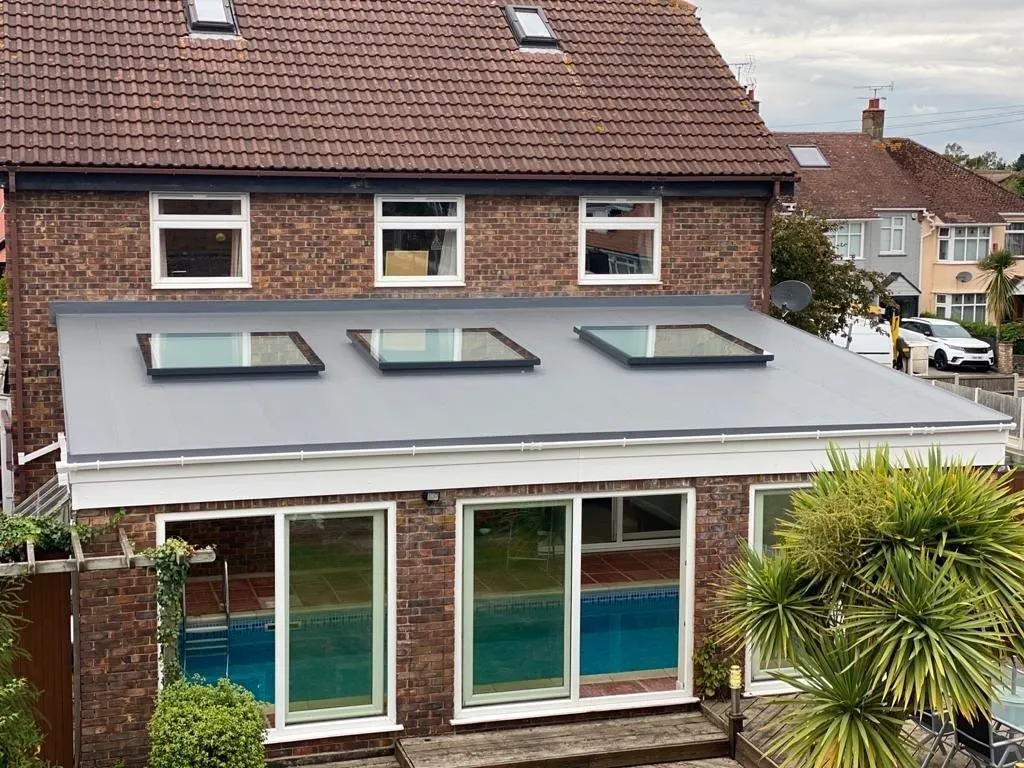
Flat roofing remains a popular solution for a diverse array of residential and commercial properties, yet there’s a wide variety of membranes available. While it’s crucial to select the right type of flat roof covering for your home or business, it can be tricky to navigate all of the different products available.
Each material comes with its own unique set of benefits, ensuring that there’s a solution to meet various structural, aesthetic and budgetary needs. In this guide, we’ll explore the most common types of flat roof coverings, from traditional options like mineral felt and torch-on felt to more modern choices such as PVC single-ply membranes and GRP fibreglass. Let’s take a closer look at the various types of flat roofing systems and what makes each of them stand out.
PVC Single-Ply Membrane Flat Roofing
PVC single-ply membrane is a robust and flexible waterproofing material composed predominantly of synthetic polymer, specifically polyvinyl chloride (PVC). Renowned for its durability, PVC single-ply has the ability to expand and contract without deteriorating, as proven across all climates.
This material is often the preferred choice of leading architects and specifiers due to its versatility and suitability for all flat roof constructions and applications. It offers a wide range of installation options to suit various flat roofing sub-bases, providing flexibility in flat roof design for both new builds and refurbishment projects. This makes it an ideal choice for domestic, commercial, and industrial flat roofing, with the added benefits of diverse colour schemes and excellent value for money.
PVC single-ply is the most popular membrane in the market, holding a significant market share in the United Kingdom and throughout Europe. These membranes are known for their exceptionally long-life expectancies and are supported by 20-year warranties, making them the top choice for many projects.
At High-Tech, we offer a selection of PVC manufacturers, ensuring versatility across our range. Each manufacturer brings a distinctive finish to the membrane, enabling us to provide tailored solutions to meet specific requirements.
EPDM single-ply roofing
EPDM is a rubberised roofing system used in both commercial and residential applications. EPDM stands for Ethylene Propylene Diene Monomer and is renowned for its durability, flexibility, and ability to withstand adverse weather conditions and temperature fluctuations. It is made from a synthetic rubber compound primarily composed of polypropylene and ethylene, both of which are derived from oil and gas. These materials combine to give EPDM its exceptional durability and long life expectancy.
Typically, EPDM is installed as a fully adhered system, where the membrane is bonded directly to the boards using adhesive. However, one common issue with this method is that, over time, the adhesive may degrade, causing the roof to lift. While this does not indicate a failure of the roof, it can significantly impact its visual appeal. As a result, EPDM may not always be the most suitable choice for the residential market, particularly when compared to other single-ply membranes that offer a more aesthetically pleasing finish.
Polyurethane Liquid Membrane
Liquid waterproofing membrane is a robust, seamless system that offers both flexibility and durability, making it an excellent choice for withstanding adverse weather conditions. The formation process, known as polymerisation, involves the reaction of monomers in the liquid waterproofing substance to form a polymer, creating a tough, durable membrane that is UV stable.
Unlike other liquid systems, such as GRP, this membrane provides exceptional elasticity and UV resistance, making it far less prone to cracking. It also boasts excellent crack-bridging properties, ensuring reliable performance even in areas subject to structural movement. Additionally, it is a fast-curing and versatile system, making it ideal for time-sensitive projects.
Its waterproofing layers and robustness make it suitable for roofs, balconies, walkways, and other structures exposed to water, both in residential and commercial applications. Furthermore, the installation process helps reduce project time and labour costs without compromising quality.
GRP Fibreglass Flat Roof
GRP (Glass Reinforced Plastic) is a fibreglass-reinforced material made from polyester resin combined with chopped strand mat glass fibres to create a GRP laminate. It is applied in liquid form, beginning with a fibreglass base layer. A catalyst is added to the resin mixture to accelerate the curing process, and once cured, a finishing topcoat is applied.
GRP is a suitable option for areas exposed to foot traffic. However, as a rigid material, it has very limited ability to accommodate structural movement. Its minimal flexibility, coupled with the adherence to substrates that naturally expand and contract throughout the year due to climate changes, makes it prone to cracking.
Weather conditions are critical during GRP installation. The system should not be installed when temperatures are outside the range of 7°C to 30°C or in damp conditions, as moisture can adversely affect the curing process. To ensure quality and longevity, GRP should only be installed by a qualified and registered supply and installation company
Mastic asphalt flat roof
Mastic asphalt roofs have been available in the UK for decades, renowned for their durability and exceptional waterproofing properties. This material is a blend of bitumen, limestone powder, and sand, which, when heated together, forms a dense and water-resistant layer.
These attributes make mastic asphalt an excellent choice for flat roofing. However, regular inspections are crucial, as blistering and cracks may develop, particularly in response to temperature fluctuations. Additionally, this roofing system is considerably heavier, so the underlying structure must be assessed to ensure adequate support.
Mastic asphalt is among the more expensive flat roofing options, partly due to the specialised equipment required and the declining number of qualified installers. This shortage is largely because younger roofing professionals are increasingly opting for more modern and advanced systems. It is essential that mastic asphalt work is carried out by a skilled and certified specialist to ensure the best results.
Torch-On Felt Flat Roof
Torch-on felt is a three-layered roofing system applied using a naked flame. However, this method is often seen as a drawback, as many sites and large refurbishment projects prohibit the use of naked flames due to the fire risk. The system consists of three layers: Venting Base Layer – Designed to prevent moisture build-up. Underlay – Bonded to the venting base to provide additional protection. Mineral Cap Sheet – The top layer, which protects against UV rays and offers a more refined finish.
Torch-on felt roofs generally have shorter lifespans and are not resistant to moss and algae growth. Additionally, insurance providers often refuse to cover felt roofs that are over ten years old. Despite these limitations, torch-on felt remains one of the more affordable flat roofing options and continues to hold a place in the market.
If you’d like to learn more about each of these types of flat roofing, or want to speak to our team about your needs, please don’t hesitate to send us a message or give us a call.
